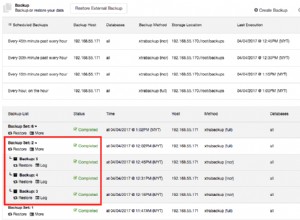tvector
Usa el tsvector type, que forma parte de la función de búsqueda de texto de PostgreSQL.
postgres> select 'What are Q-type Operations?'::tsvector;
tsvector
-------------------------------------
'Operations?' 'Q-type' 'What' 'are'
(1 row)
También puede usar operadores familiares en tsvectors:
postgres> select 'What are Q-type Operations?'::tsvector
postgres> || 'A.B.C''s of Coding'::tsvector;
?column?
--------------------------------------------------------------
'A.B.C''s' 'Coding' 'Operations?' 'Q-type' 'What' 'are' 'of'
De la documentación de tsvector:
Si también desea realizar una normalización específica del idioma, como eliminar palabras comunes ('the', 'a', etc.) y multiplicaciones, use el to_tsvector función. También asigna pesos a diferentes palabras para la búsqueda de texto:
postgres> select to_tsvector('english',
postgres> 'What are Q-type Operations? A.B.C''s of Coding');
to_tsvector
--------------------------------------------------------
'a.b.c':7 'code':10 'oper':6 'q':4 'q-type':3 'type':5
(1 row)
Búsqueda de texto completa
Obviamente, hacer esto para cada fila en una consulta será costoso, por lo que debe almacenar el tsvector en una columna separada y usar ts_query() para buscarlo. Esto también le permite crear un índice GiST en el tsvector.
postgres> insert into text (phrase, tsvec)
postgres> values('What are Q-type Operations?',
postgres> to_tsvector('english', 'What are Q-type Operations?'));
INSERT 0 1
La búsqueda se realiza mediante tsquery y el operador @@:
postgres> select phrase from text where tsvec @@ to_tsquery('q-type');
phrase
-----------------------------
What are Q-type Operations?
(1 row)




